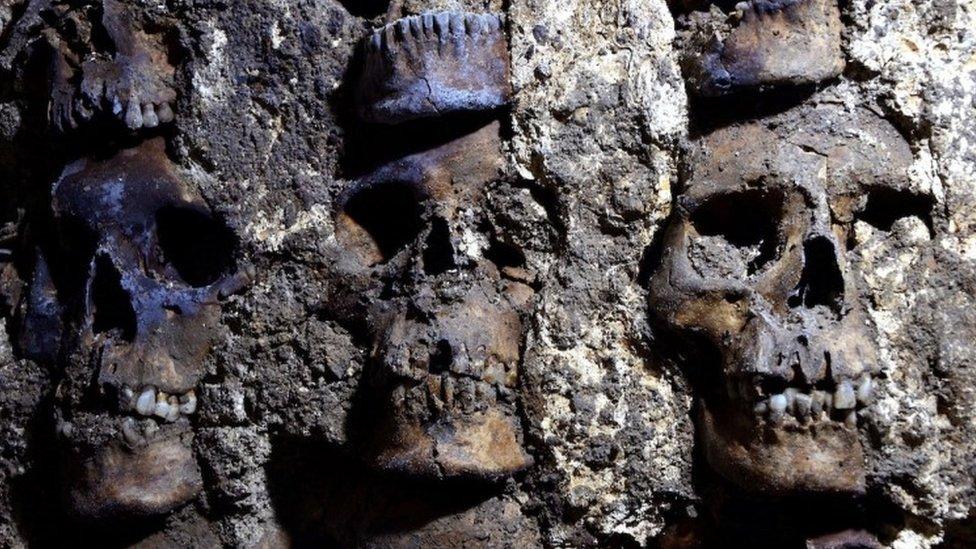
You weren’t supposed to die today.
That’s the first thing you need to understand. When you woke up on August 24th, 79 AD, you didn’t know. How could you?
The sun was shining. The markets were open. You were thinking about ordinary things. Bread. Your children. The invoice you needed to settle.
You didn’t choose this. Nobody does.
The Moment Everything Stopped
It’s roughly one o’clock in the afternoon.
You’re in the street. Maybe you’re running an errand. Maybe you’re heading home. The ground shakes. Not unusual. Vesuvius has been rumbling for days. You’ve felt tremors before. Everyone has.
Then you look up.
A column of ash rises thirty-three kilometres into the sky. It’s massive. Impossibly massive. The kind of thing that shouldn’t exist. But it does. And it’s directly above you.
Your instinct tells you to run.
You start to run.
Everyone starts to run.
But here’s what you don’t know yet. What you can’t possibly know. The thing racing down the mountainside towards you isn’t just ash. It’s a pyroclastic surge. A wall of superheated gas, pumice, and rock fragments. Three hundred degrees Celsius. Moving at seven hundred kilometres per hour.
Faster than a racing chariot.
Faster than thought.
Faster than you.

You don’t have time to process this. You’re just running. Your lungs are burning. Your legs are screaming. You raise your arms. Instinctively. Uselessly. As if you could push it away.
The person they’ll find in 1863 died like this. Mid-stride. Arms raised. Mouth open. The skeleton will show they were running. The plaster cast will show they died running.
The Pyroclastic Surge: Death Travelling at 700 Kilometres Per Hour
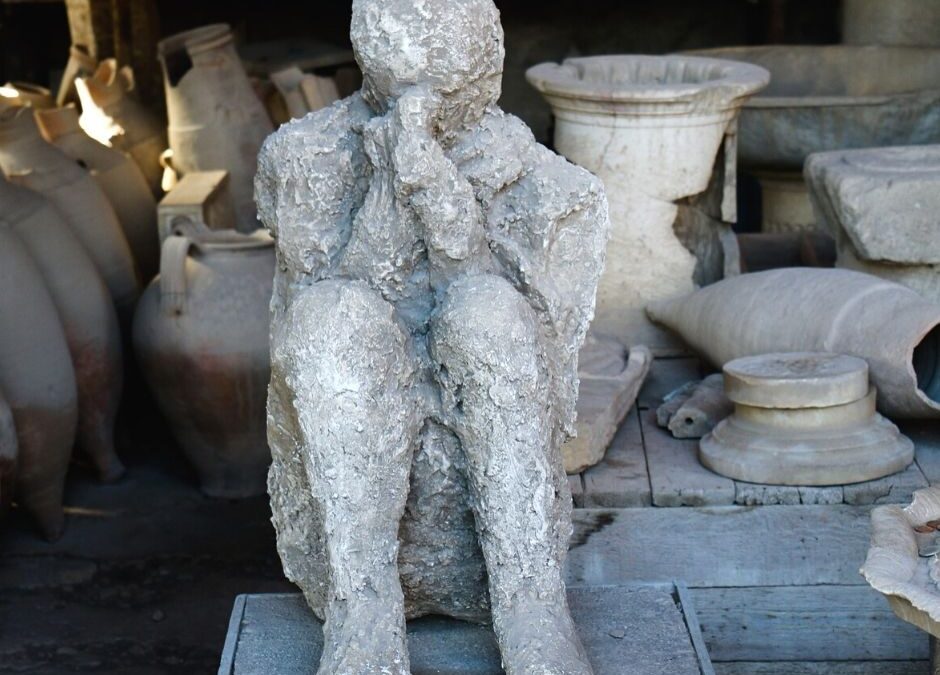
Most people imagine Pompeii buried gently. Peacefully. Under a soft blanket of ash.
Wrong.
Catastrophically wrong.
The surge hits you before you can take another breath. It doesn’t suffocate you slowly. It doesn’t give you time to think final thoughts or whisper final prayers.
It annihilates you.
Instantly.
Completely.
Your body experiences thermal shock. Your flesh chars. Your muscles contract violently, suddenly, uncontrollably. The heat is so intense that your brain tissue boils. Or, that is what it feels like. The pressure inside your skull builds. Fractures.
In some cases, body fluids vaporise so rapidly that skeletons remain standing. Locked in position. Frozen in the exact posture of death.
You don’t feel most of this. You can’t. The human nervous system isn’t designed to process that level of trauma. Your brain shuts down before the worst of it registers.
Small mercy.
The only mercy.
The Plaster Casts: Archaeology’s Most Intimate Crime Scene
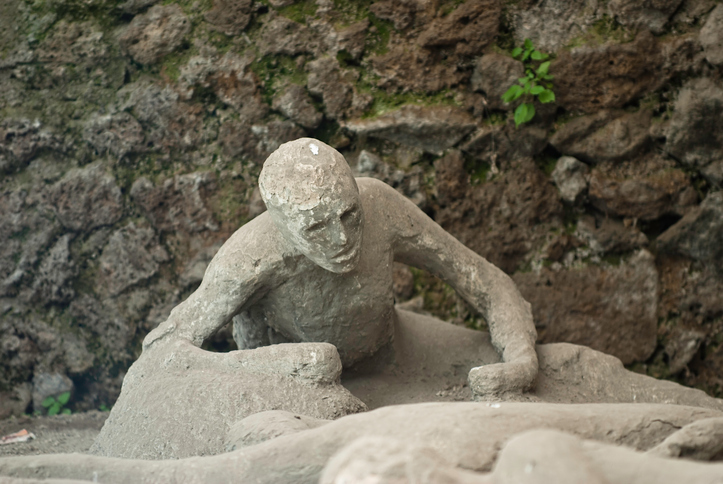
You’re gone now. Long gone.
But your shape remains.
The ash hardens around you. Creates a perfect mould. Your body decomposes over centuries, slowly, silently, completely. But the void you left behind? That stays. Preserved in volcanic stone.
In the 1860s, archaeologists noticed these hollow spaces. Giuseppe Fiorelli has an idea. Brilliant. Disturbing. He injects liquid plaster into the cavities. Waits for it to harden. Chips away the surrounding ash.
What emerges is you.
Not a statue. Not an interpretation.
You.
The exact position of your body at the moment of death. The angle of your head. The curve of your spine. The desperate reach of your hand.
You’re lying on your back. Right arm across your chest. Left arm extended. Mouth open. Abdominal muscles contracted.
You died in agony. That much is clear. Undeniable. Written in plaster.
Nearby, there’s a child. No more than seven years old. Curled on their side. Knees drawn up. Head tilted. They died seeking comfort. Or perhaps just seeking anything. Protection. Safety. Their mother.
They found none of it.

The Evidence: What Your Body Tells Us
The plaster casts aren’t speculation. They’re documentation.
Archaeological evidence verified through multiple scientific methods. Rigorous. Detailed. Unambiguous.
Your skeleton shows pathological fractures. Cracks that appeared when extreme heat caused your bones to contract. The calcium deposits on your teeth indicate temperatures exceeding two hundred and fifty degrees Celsius. Some teeth show stress lines. Formed only under severe thermal trauma.
Modern forensic analysis confirms what the archaeologists suspected. You experienced temperatures between 250 and 300 degrees Celsius.
Possibly higher.
It’s hard for anyone to imagine.
In the House of the Faun, they found a pregnant woman. The foetus was calcified but preserved. An unborn child who never took a breath. A mother who took one final breath that killed her.
Both are visible in the plaster cast.
Both died together in that singular moment.
Thermoluminescence dating of the ash layers confirms the eruption occurred in August. Likely in the afternoon based on wind patterns and ash distribution. Pliny the Younger witnessed it from a distance. He wrote about it decades later. Described the pyroclastic surge as “a dark and horrible cloud charged with the stench of sulphur.”
His description aligns precisely with what modern vulcanology tells us about pyroclastic flows.
He was telling the truth.
Every word.
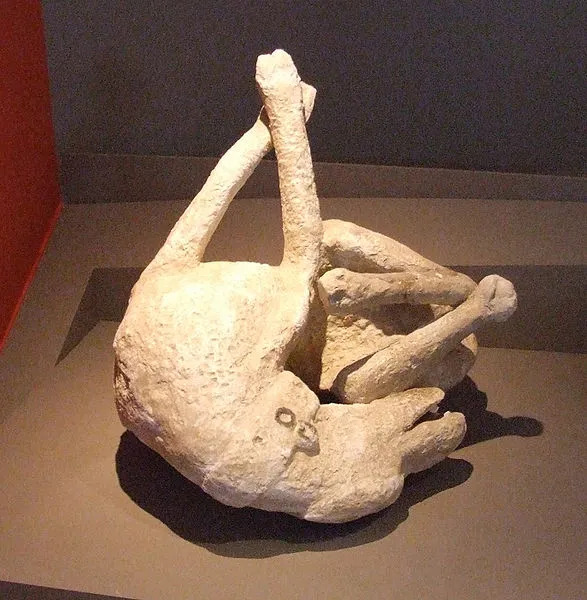
The Psychology of the Final Moment
What makes Pompeii uniquely horrifying isn’t just the violence of death. It’s what the casts reveal about human psychology in the face of annihilation.
You understood what was happening.
Not fully. Not scientifically. But you knew. In those final seconds, you knew. Your body shows it. Arms raised. Muscles tensed. Face turned away from the surge.
You saw something coming. You tried to defend yourself against it.
The woman with her arms raised wasn’t resting. She was reacting. Desperately. Futilely. Her body was trying to shield itself from something she couldn’t outrun.
Children were found in the arms of adults. Parents who held their children through the final seconds. The plaster casts show hands still positioned around small bodies. Protective. Loving. Useless.
There’s no way to know if the children died first. Or if the parents survived another moment, holding children already gone.
Either possibility is unbearable.
In the House of the Mysteries, a servant died with his arms raised defensively. Mouth open as if calling out. His skeleton shows he was young. Late teens or early twenties. His final moment was preserved in his posture. Terror. Resistance.
The futile human impulse to fight against something that couldn’t be fought.
He fought anyway.
They all did.
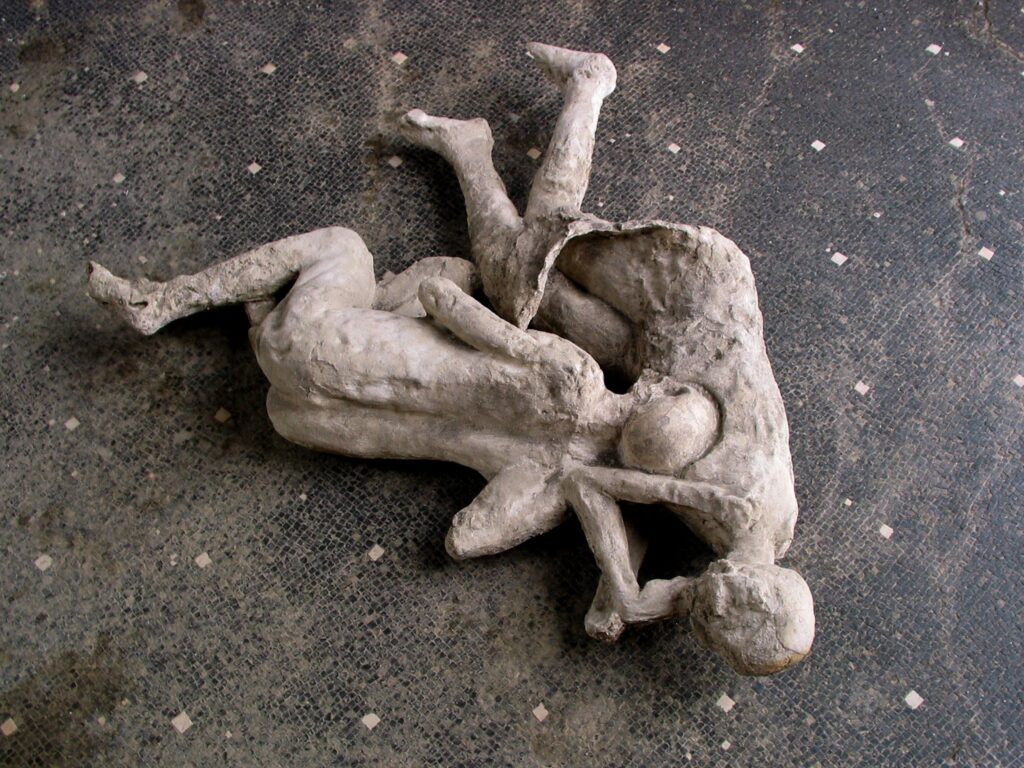
The Reality: Not a Moment of Peace
Romantic notions of Pompeii as a “frozen city” miss the essential horror.
These aren’t people going about their day.
These are people dying horrible deaths.
The plaster casts don’t show you at rest. They show you in your last conscious moments. Gasping. Running. Huddling. Contracting. Burning.
The archaeological evidence is unambiguous. Death came fast. But not instantly. Not for many. There was a moment when you realised what was happening. However brief. However terrible.
That moment is preserved in your bones and your posture.
When someone stands before your plaster cast in the Archaeological Museum of Naples, they’re not looking at an artefact. They’re looking at the exact moment you died. The position of your limbs. The angle of your head. The state of your teeth.
These aren’t interpretations.
These are data points from the moment of death itself.
Your death.
Preserved forever.
You didn’t choose to be here. You didn’t choose to die this way. But on August 24th, 79 AD, at roughly one o’clock in the afternoon, Mount Vesuvius made the choice for you.
Quickly.
Violently.
Finally.
Mount Vesuvius erupted in AD 79, releasing a towering column of ash and gas that collapsed in lethal surges over Pompeii, Herculaneum, and a few nearby towns.
The superheated pyroclastic flows ended everything in minutes, preserving people, animals, buildings, and daily life in astounding detail.. The eyewitness to the eruption, Pliny the Younger, described the sky “dark as ink” and the air thick with falling pumice. This catastrophic event became one of archaeology’s most fascinating time capsules ever.
Our New Live Ko-Fi Page
Your support keeps the research going, the ink flowing, and the dead just restless enough to talk. Thank you for keeping their voices — and ours — alive. Together we make history!

Sources & Further Reading
Information for this feature draws on several recognised works and field reports, including studies by volcanologist Harald Sigurdsson and colleagues (1985, National Geographic Research), archaeological analyses by L. Capasso (2001, Journal of the Royal Society of Medicine), and site documentation from the Archaeological Park of Pompeii (2019). Background perspectives also come from A. Varone’s Eroticism in Pompeii (2000), Mary Beard’s Pompeii: The Life of a Roman Town (2008), G. Fiorelli’s nineteenth-century Descrizione di Pompeii, and the eyewitness letters of Pliny the Younger.




